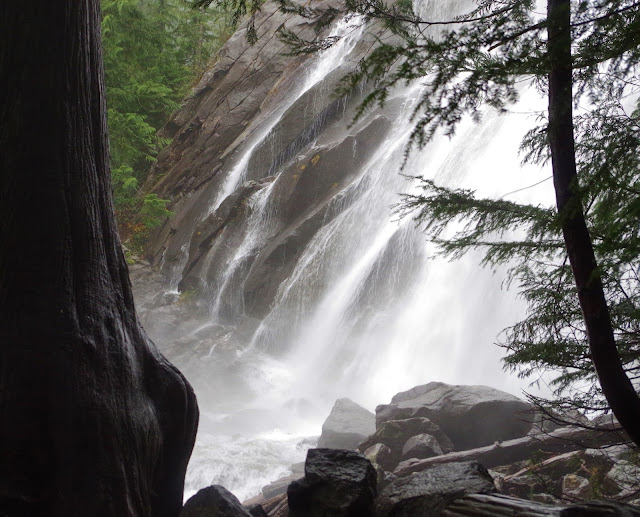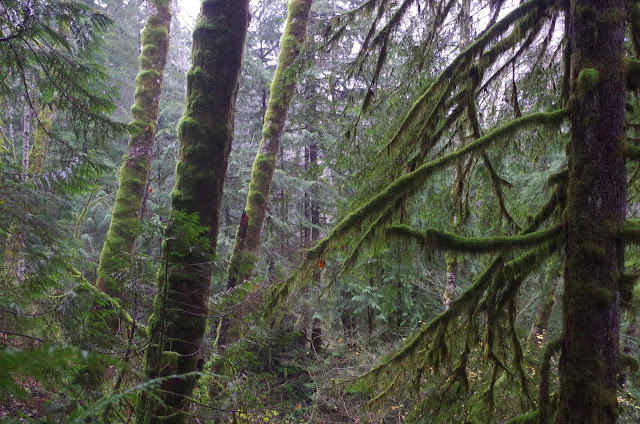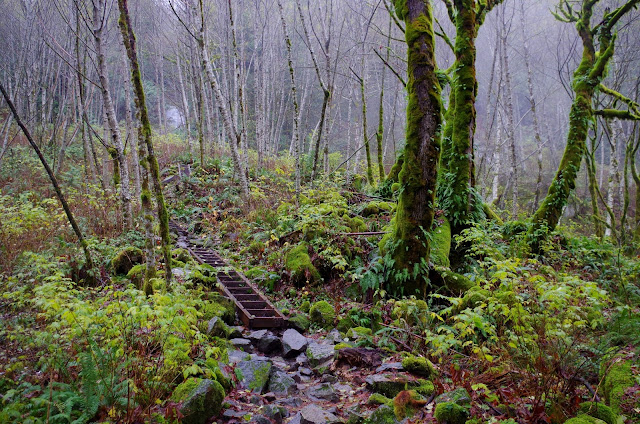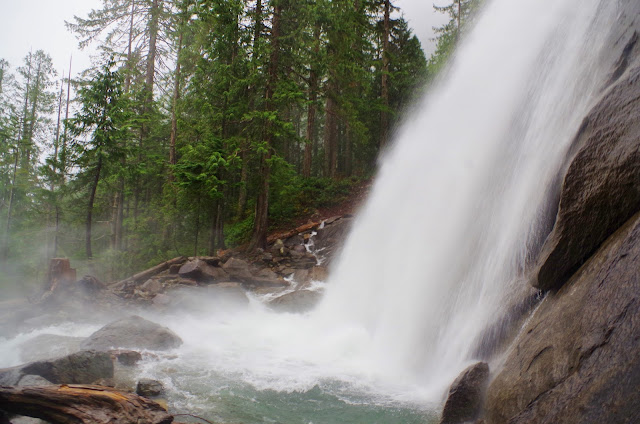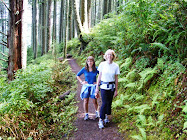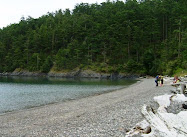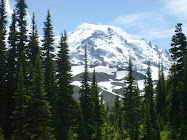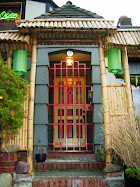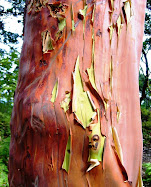And of course on this holiday, it's about giving thanks for...whatever. Anything. Everything.
I think just sharing a meal together around a table with others is something to be grateful for. How often do you do that each week?
So first and foremost, I'm grateful to dine with members of my extended family this Thanksgiving season. Especially after everyone has put time, energy, and love into preparing a special meal.
Here in the Pacific Northwest, Thanksgiving time is often stormy, damp, and windy, and occasionally sunny and cold.
For our tempestuous and ever-changing weather, for our drenching rains and stark blue skies afterwards, I am grateful. For foggy days that shroud the landscape in a comforting mist, like a favorite blanket, I am grateful.
This year I've been challenged by deep loss. For the wild and precious lives of my stepmother Bonnie and brother David, who passed away this year, I will be forever grateful.
For our abundant and beautiful mountain trails, those who put time and energy into maintaining them, and my friends who join me on hikes, I am grateful.
For the Salish Sea, on whose beaches I played as a child and whose waters I now cruise in my sea kayak, I am grateful. May we strive to ensure safe and clean water for the formerly abundant marine life and a better, healthier marine ecosystem for the struggling but surviving wild salmon and Southern Resident Killer Whales (orcas).
And extra thanks for Granny, the presumed 104-year-old Southern Resident orca who still is out there, raising and mothering the J pod. Her long life is a tremendous inspiration to thousands.
Back to mountains again, for Mt. Hood (Wy'east), on whose forgiving slopes I learned to ski and whose trails I first backpacked as a teen, I'm especially grateful.
I could go on and on in this vein, posting hundreds of photos and thanking everything, like...
all my family and friends,
those who work hard to make this world a better place,
grocery checkers and other service workers who give me a friendly smile at just the right moment,
the sun,
the sky,
the moon,
the stars,
ladybugs,
my productive garden,
Columbia Gorge waterfalls,
Washington State ferries,
banana slugs,
sword ferns,
trilliums,
wild rhododendrons,
the remaining old growth forest,
western red cedars (Thuja plicata),
ponderosa pines,
Northwest berries,
laughter, especially babies and toddlers laughing,
long and late summer sunsets,
the wind that caresses and jingles my wind chimes, and...and....and it's hard to stop!
So for now I'll take leave, log off, and plan on spending a social media, web-free holiday. I'll try to be fully present with those around me, including any whales I might see on the ferry ride to Bainbridge (wishful thinking).
How about you? What tops your list of gratitude this year? Wishing you and yours a lovely Thanksgiving and holiday season ahead.
Happy trails and thanks for visiting Pacific Northwest Seasons!
In between blog posts, visit Pacific NW Seasons on FaceBook, Twitter, and Instagram for more Northwest photos and outdoors news.














